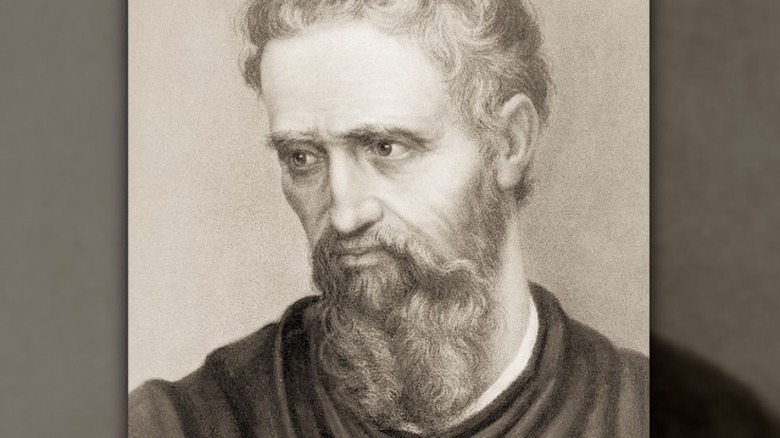Why Leonardo Da Vinci And Michelangelo Couldn't Stand Each Other
Leonardo da Vinci and Michelangelo, both of whom lived in the 1400s and 1500s, created works of art that have been studied by many over the centuries, and are still admired by millions today. They were contemporaries and knew of each other, but purportedly, their personalities could not have been any more different.
The thing with da Vinci was that he often worked for a very long time on projects, only to quit them. The one exception was when he was working on a statue, and it wound up being shot to pieces by invading forces, which was obviously not his fault. He didn't even finish his most famous painting, "The Mona Lisa." There is no denying da Vinci's brilliance, though. Michelangelo, on the other hand, was an incredibly prolific artist, widely known for his sculptures and paintings, including those in the Sistine Chapel at the Vatican. Those paintings include "The Creation of Adam" and other scenes from the Book of Genesis, and Michelangelo's hard work in the Sistine Chapel, over the course of four years, caused his eyes to go bad.
The two of them, while being arguably the best artists of their time — and even possibly the best in history — were not that fond of each other. Their animosity began between 1503 and 1504, when they were both commissioned to do a painting in Florence.
Michelangelo was a prickly personality
While they were never rivals to the point where they would fight, it was more like continued mocking. They were rough on each other about the commissions, and if they were alive today, the two would probably be talking trash to each other on social media.
Still, it was more Michelangelo who did the verbal jousting with da Vinci than the other way around. This may have been in part due to the fact that he was much younger than da Vinci, so it may have been his youthfulness that drove him to it. He liked to talk about how slow da Vinci was when it came to projects, and the elder painter gave him fuel by not finishing the painting commission that they were competing on. Raphael, another great artist of the Renaissance, was also a frequent target of Michelangelo's scorn.
Michelangelo happened to not like the company of many people at all. He lived a very, very modest life, and only focused on his art for much of the time. That lack of social interaction may have also made him quite rough around the edges. There was also a good amount of ego involved among all three, adding more fuel to the fire. Perhaps they would have been soothed by the knowledge that all three of them are universally admired hundreds of years later.

